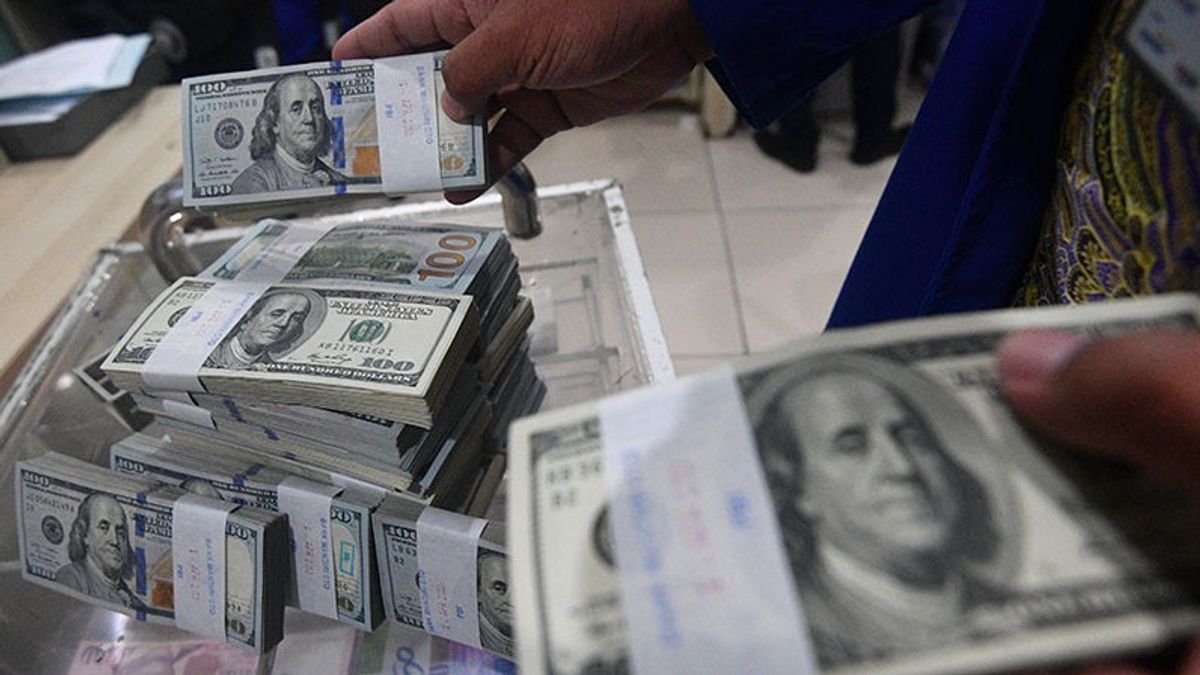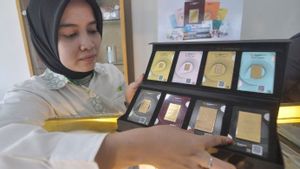JAKARTA - Bank Indonesia (BI) reported that Indonesia's external debt (ULN) at the end of the second quarter of 2021 was US$415.1 billion or equivalent to Rp5,975.2 trillion (exchange rate of Rp14,387). This amount is less compared to the first quarter of 2021 of IDR 415.3 US dollars.
This means that there has been a decline in external debt by 200 million US dollars or Rp. 2.87 trillion in the three months of the first half of this year.
Head of the BI Communications Department Erwin Haryono said that on an annual basis, foreign debt in the second trimester of 2021 was 1.9 percent, lower than the first trimester which was at 7.2 percent.
"This development was driven by the slowing growth of government external debt and contraction of private external debt," he said in an official statement, Monday, August 16.
According to Erwin, the government's external debt position in the second quarter of 2021 reached 205.0 billion US dollars or grew 4.3 percent year-on-year (yoy), lower than the growth in the first quarter of 2021 which was 12.6 percent yoy.
"There has been a decline in the position of foreign loans by the government in line with the repayment of loans maturing during the second quarter of 2021. Repayment of foreign loans is an important part in maintaining the government's credibility in managing external debt," he said.
Meanwhile, the position of private external debt in the second quarter of 2021 was recorded at 207.2 billion US dollars, or decreased by 0.8 compared to the previous quarter.
"Private external debt contracted by 0.5 percent yoy in the second quarter of 2021, after in the first quarter of 2021 it grew positively by 2.6 percent yoy," he said.
By sector, the largest private external debt comes from the financial and insurance services sector, the electricity, gas, steam/hot water and cold air supply sector, the mining and quarrying sector, and the manufacturing industry sector, with a share of 76.3 percent of the total private external debt. .
"This external debt is still dominated by long-term external debt with a share of 76.7 percent of the total private external debt," he said.
In general, Erwin explained that the structure of Indonesia's external debt remained healthy, supported by the application of prudential principles in its management.
"Indonesia's external debt in the second quarter of 2021 remained under control, as reflected in the ratio of Indonesia's external debt to Gross Domestic Product (GDP) which was maintained at around 37.5 percent, down from the ratio in the previous quarter of 39.0 percent," he said.
In addition, he continued, the structure of Indonesia's external debt remained healthy as indicated by Indonesia's external debt which remained dominated by long-term external debt, with a share of 88.4 percent.
“In order to maintain a healthy external debt structure, Bank Indonesia and the government continue to strengthen coordination in monitoring the development of external debt, supported by the application of prudential principles in its management. The role of external debt will also continue to be optimized in supporting development financing and encouraging national economic recovery, by minimizing risks that can affect economic stability," concluded Erwin.
The English, Chinese, Japanese, Arabic, and French versions are automatically generated by the AI. So there may still be inaccuracies in translating, please always see Indonesian as our main language. (system supported by DigitalSiber.id)













